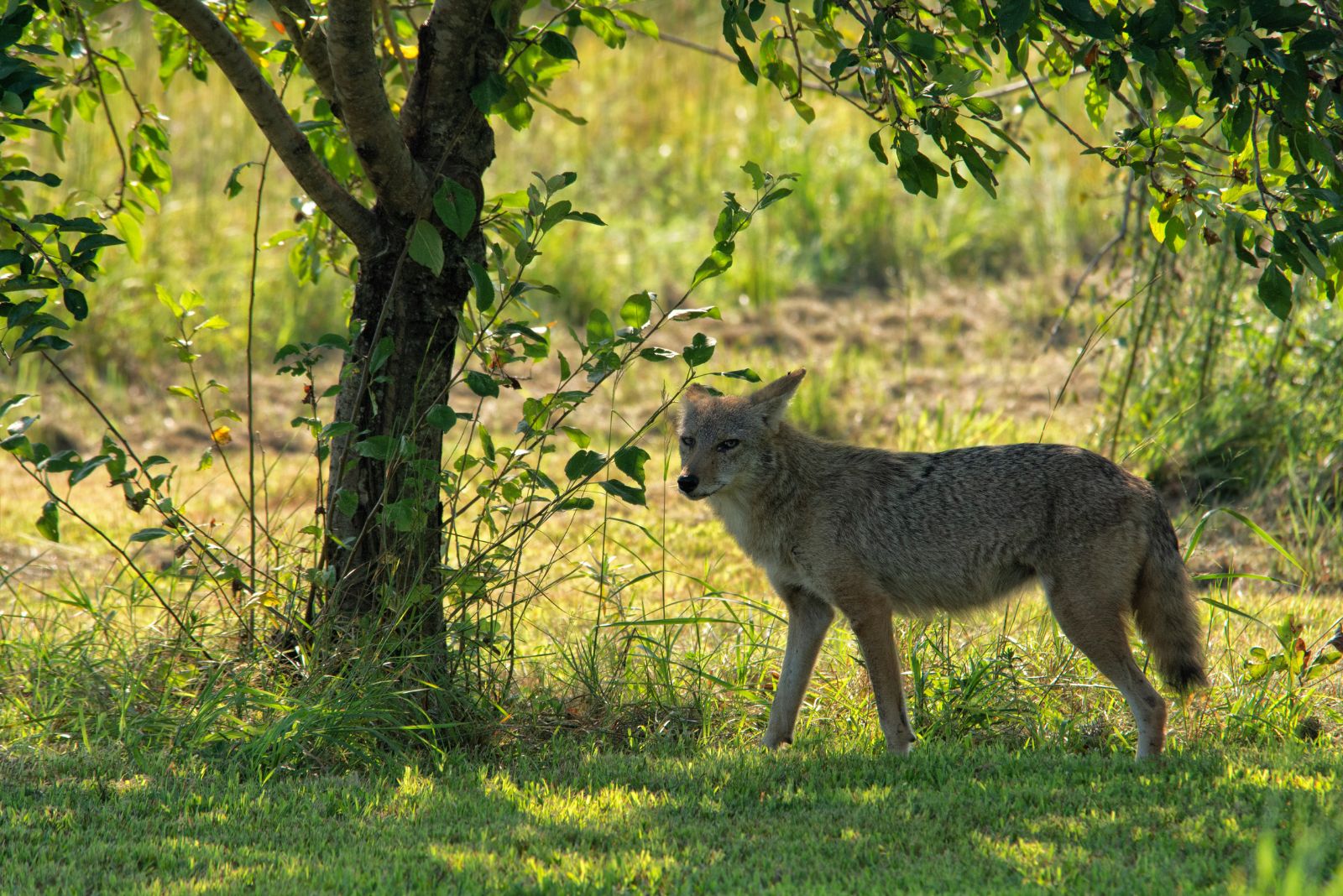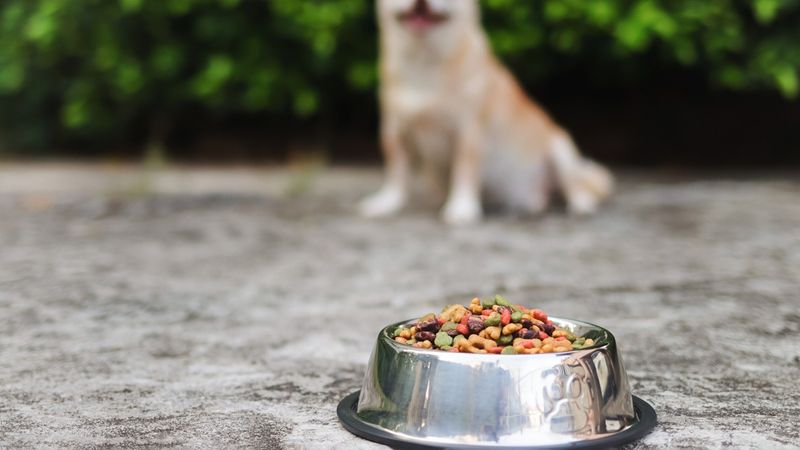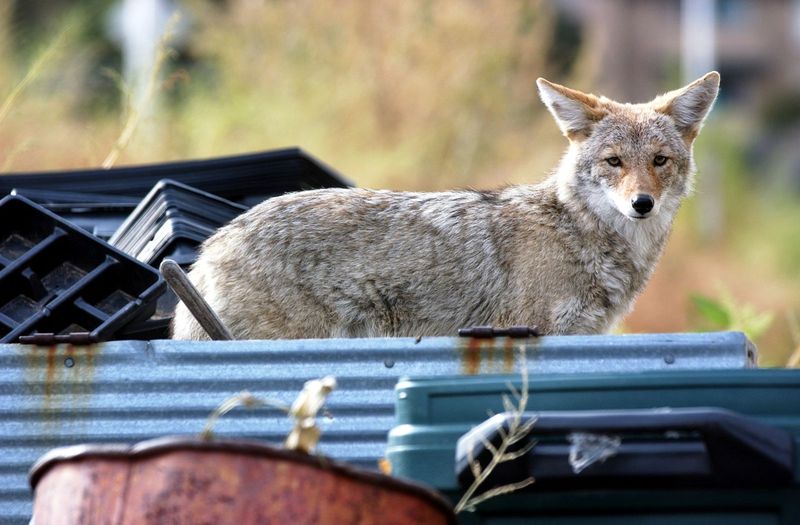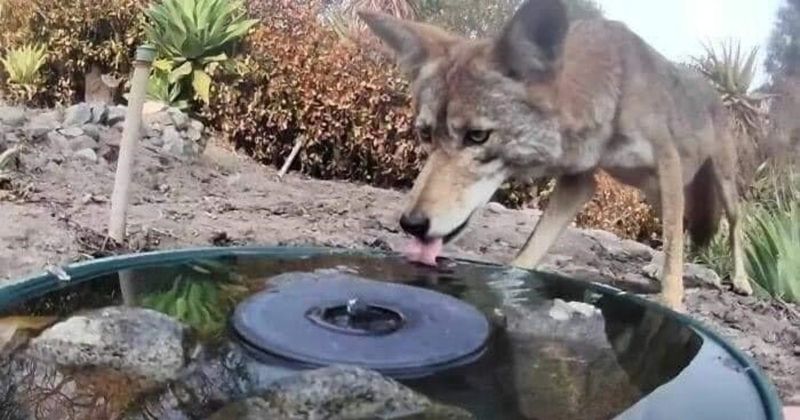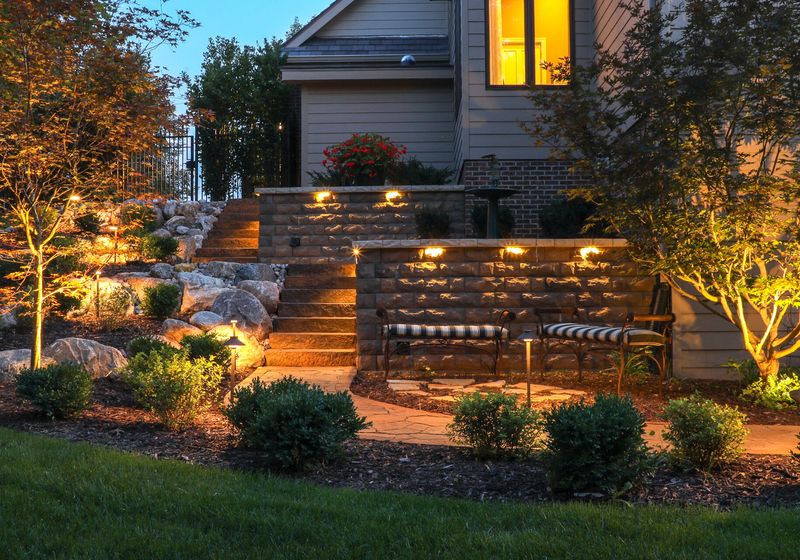Coyotes are slipping into North Carolina neighborhoods more often than many homeowners expect, and some yards are rolling out the welcome mat without anyone realizing it. Food scents, easy hiding spots, and tempting water sources can draw coyotes in like moths to a flame.
Most families have no idea their own yards hold the very things coyotes look for. Understanding what invites them is the first step to keeping these clever visitors at arm’s length.
1. Unsecured Pet Food Bowls
Leaving pet’s dinner outside might seem harmless, but it’s basically setting up a buffet for hungry coyotes. These clever animals have incredible noses and can smell pet food from blocks away.
Once they discover an easy meal at your house, they’ll keep coming back for more. Food left out overnight is especially tempting since coyotes are most active during dawn and dusk.
Always bring pet bowls inside after feeding time, and never leave food sitting out overnight, even if your dog didn’t finish eating.
2. Overgrown Brush And Shrubs
Wild, untrimmed bushes create perfect hiding spots where coyotes feel safe and protected from human eyes. Dense vegetation gives them cover to rest during the day and scout your property without being noticed.
Tall grass and thick shrubs also attract smaller animals like rabbits and rodents, which happen to be favorite coyote snacks. When prey animals gather in your overgrown yard, predators naturally follow.
Keep your landscaping neat by trimming bushes regularly and clearing away dry branches that create hiding places.
3. Open Compost Piles
Your eco-friendly compost heap might be attracting more than beneficial worms and helpful bacteria. Fruit peels, vegetable scraps, and other organic matter produce strong odors that coyotes find irresistible, even from far away.
While coyotes primarily hunt small animals, they’re opportunistic eaters who won’t pass up an easy snack. Compost piles also draw rodents and insects, creating a complete food chain right in your backyard.
Use sealed compost bins instead of open piles, and avoid adding meat or dairy products that smell especially appealing.
4. Unsecured Garbage Cans
Trash cans without tight-fitting lids are like treasure chests to resourceful coyotes with strong paws and determination. They’ll knock over bins, tear open bags, and scatter garbage everywhere while searching for leftovers and discarded food.
Once coyotes learn that your trash contains meals, they’ll visit regularly on garbage night. This behavior also teaches younger coyotes that human neighborhoods provide easy food sources.
Invest in animal-proof containers with locking lids, or store trash cans in your garage until collection morning to eliminate this attraction completely.
5. Bird Feeders And Spilled Seed
Watching cardinals and chickadees visit your feeder is delightful, but the seeds falling below create unexpected problems. Ground-feeding birds and squirrels gather underneath to eat spilled seeds, making your yard a hunting ground for coyotes.
Small mammals attracted to birdseed are exactly what coyotes hunt in the wild. The predators watch these gathering spots and wait patiently for the perfect moment to pounce.
Place trays under feeders to catch fallen seeds, clean up spills regularly, and bring feeders inside at night when coyotes are most active and hunting.
6. Outdoor Water Features
That peaceful koi pond or bubbling fountain serves as more than just pretty yard decoration. Coyotes need reliable water sources, especially during hot North Carolina summers when natural streams may run low.
Water features also attract frogs, insects, and small birds that come to drink, creating hunting opportunities. Ponds with fish are particularly appealing since coyotes are surprisingly skilled at catching aquatic prey.
While you don’t need to remove water features entirely, adding motion-activated lights nearby can discourage nighttime visits when coyotes typically come to drink and hunt.
7. Fallen Fruit From Trees
Apple, pear, and persimmon trees produce delicious fruit, but what drops and rots on the ground becomes an unexpected coyote magnet. While these predators prefer meat, they’re omnivores who happily munch on sweet, fermented fruit.
Rotting fruit also attracts possums, raccoons, and insects, which then attract hunting coyotes looking for their next meal. The smell of decomposing fruit carries surprisingly far on the wind.
Rake up fallen fruit promptly, harvest ripe produce before it drops, and consider fencing around fruit trees to limit wildlife access during peak season.
8. Unattended Small Pets Outdoors
Letting small dogs or cats roam outside unsupervised, especially during early morning or evening hours, puts them at serious risk. Coyotes view animals under 25 pounds as potential prey rather than fellow pets.
Even fenced yards aren’t always safe since determined coyotes can jump six-foot barriers or squeeze through surprisingly small gaps. Once coyotes successfully hunt in a yard, they remember that location as a reliable food source.
Always supervise small pets outside, bring them in at dusk and dawn, and install coyote-proof fencing at least six feet tall with buried barriers.
9. Outdoor Lighting Gaps
Surprisingly, yards with poor lighting or completely dark corners give coyotes the confidence to explore closer to homes. These naturally cautious animals prefer shadows where they can move undetected by humans.
Dark areas near fences, under decks, or beside sheds become travel corridors that coyotes use regularly when moving through neighborhoods. They’ve learned that darkness provides safety from people who might chase them away.
Install motion-activated lights around your property’s perimeter, especially near potential hiding spots, to make coyotes feel exposed and encourage them to avoid your yard entirely.

